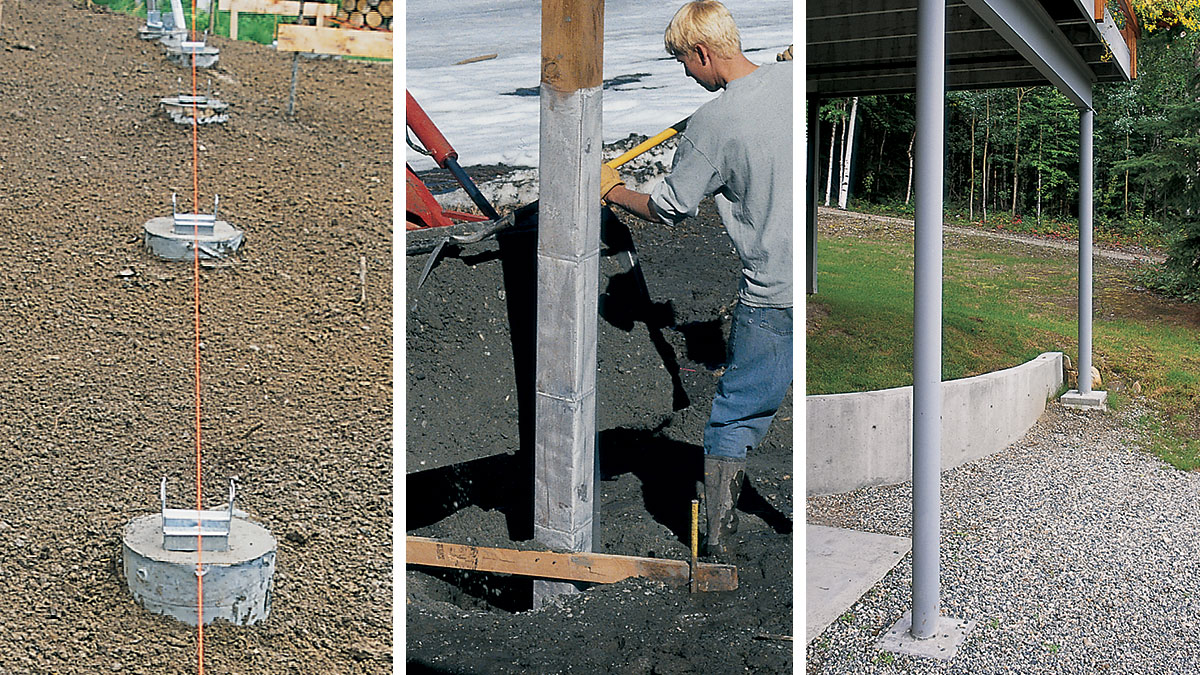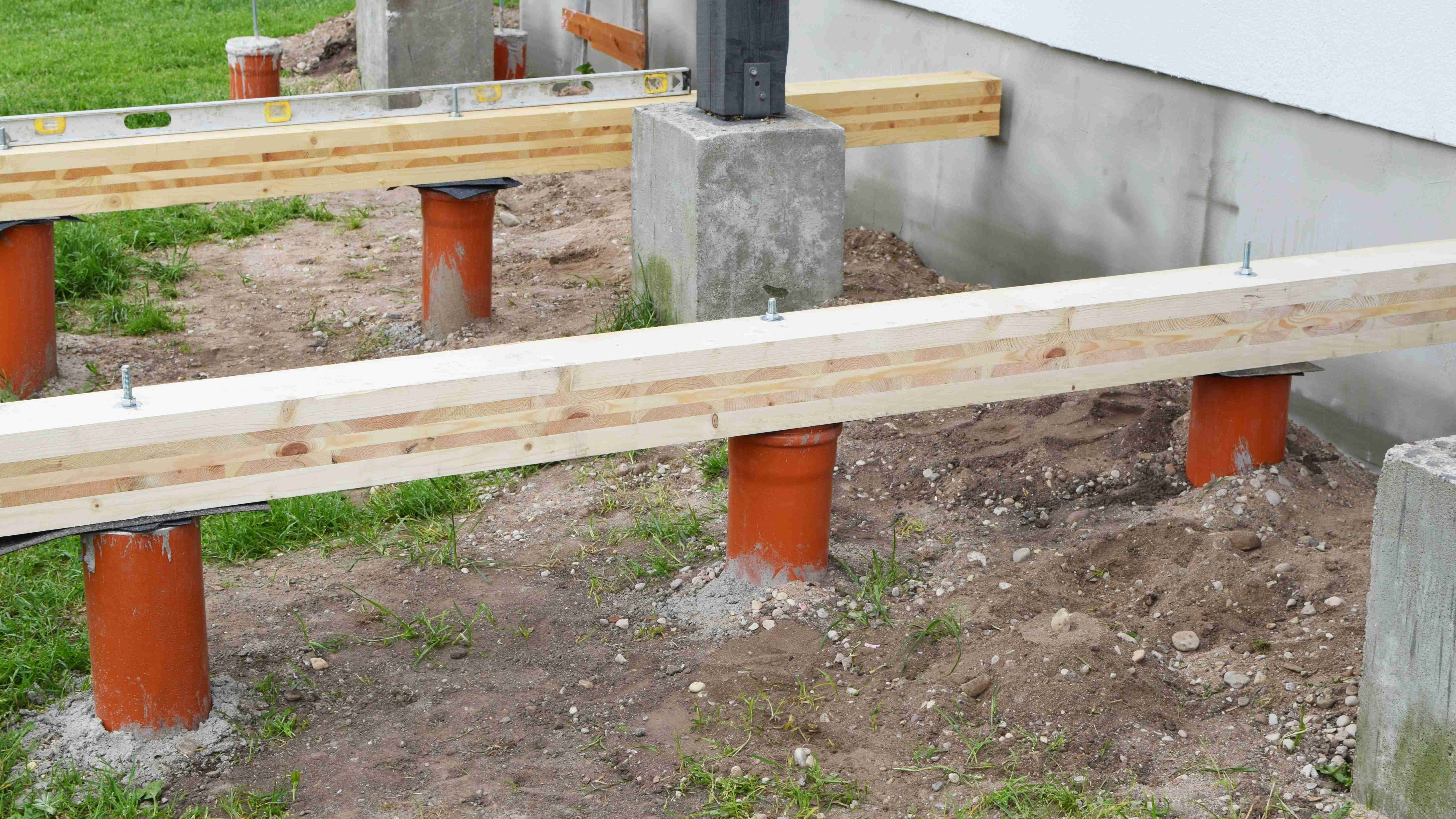From Principle to Concrete: The Vital Function of Deck Footings in Sturdy and Safe Decks
From Principle to Concrete: The Vital Function of Deck Footings in Sturdy and Safe Decks
Blog Article
Specialist Tips for Setting Up Deck Footings to Assistance Your Outdoor Room
When it comes to building a deck, one of the most critical components to think about is the installment of proper footings. These footings are the foundation upon which your exterior space will certainly rest, giving security and support for years to come. What exactly does it take to mount deck footings properly?
Value of Proper Deck Footings
Appropriate deck footings are important for ensuring the security and long life of your outside area. When building a deck, it is critical to take notice of the structure on which it will rest. Deck grounds supply the required support for the entire structure and aid distribute the weight evenly - Deck Footings. Without strong and effectively mounted grounds, your deck may end up being unsteady, bring about security hazards and expensive repairs.

Along with stability, appropriate deck grounds additionally add to the long life of your outside room (Deck Footings). Grounds that are created and constructed to endure the components and soil problems in your area will certainly help stop the deck from changing or clearing up over time. By ensuring the grounds are effectively sized and mounted, you can lessen the threat of damage to the deck structure, prolonging its life-span and decreasing the demand for expensive repairs or replacements

Choosing the Right Sort Of Grounds
When picking the appropriate kind of grounds for your deck, it is crucial to consider factors such as soil conditions, local building regulations, and the total style of your exterior space. The kind of footing you pick will certainly play an essential function in ensuring the stability and long life of your deck.
One common type of footing is the concrete footing. Concrete grounds are ideal for the majority of dirt problems and offer excellent support for decks.
Sometimes, you may need to use specialized grounds, such as heap grounds or deep structures, if you are constructing a multi-level or big deck. These grounds are designed to disperse the weight of the deck over a larger area, ensuring security and preventing clearing up or sinking.
Prior to selecting a kind of footing, it is necessary to seek advice from local structure codes and guidelines to ensure conformity. Furthermore, take into consideration the design and planned use of your outdoor area. Variables such as the dimension, shape, and load-bearing demands of your deck will certainly influence the sort of footing that is most appropriate.
Preparing the Ground for Footing Setup
To effectively prepare the ground for footing installation, it is very important to evaluate the soil problems and take required actions to ensure security and sturdiness of the deck. The very first step is to excavate the location where the grounds will be installed. The depth of the excavation will rely on the frost line in your region and the details requirements of the deck layout. It is crucial to get rid of any type of plant life, rocks, or debris from the excavation to make certain a strong foundation.
When the area has been dug deep into, the following step is to small the soil. This can be done using a plate compactor or by utilizing a hand tamper. Compacting the soil assists to remove any type of spaces or air pockets, which can cause settling and instability gradually.
After compacting the soil, it is essential to lay a layer of gravel or smashed rock Source at the bottom of the excavation. This will certainly offer water drainage and aid to stop water from merging around the footings, which can bring about erosion and instability.
Step-by-Step Guide to Setting Up Deck Footings
After correctly preparing the ground for footing setup, the following step is to begin the procedure of installing deck footings. This step-by-step overview will certainly offer you with a clear understanding of exactly how to mount deck grounds for your outside area.
Establish the place: Begin by noting the settings of the deck footings making use of stakes and string. Make sure that the locations line up with the layout and layout of your deck.
Dig the openings: Utilize a blog post hole digger or an auger to dig the openings for the grounds. The depth and diameter of the openings should remain in conformity with regional building regulations and the particular requirements of your deck design.
Degree the openings: Utilize a level to make sure that the openings are dug to the correct depth and are level with each other. (Deck Footings)
Include crushed rock: Area a layer of crushed rock at the bottom of each hole to enhance drain and avoid the wood from decomposing.
Put the grounds: Put the footings right into the openings, seeing to it they are level and plumb. Utilize a level and a gauging tape to ensure accuracy.
Safeguard the footings: Put concrete right into the holes around the footings, filling them to the top. Make use of a message level to make sure the grounds stay degree as the concrete collections.
Enable time for healing: Let the concrete cure according to the supplier's guidelines prior to waging the deck building.
Usual Errors to Prevent During Footing Setup
One vital facet to think about throughout the installment of deck footings is preventing typical blunders that can endanger the security and long life of your outdoor space. While deck footings may look like a easy and simple component of the building and construction process, forgeting certain aspects can cause expensive repairs and potential security dangers down the line.

In addition, overlooking to mount proper drain steps can create water to accumulate around the grounds, resulting in rot, degeneration, and the eventual weakening of the deck's structure. Furthermore, making use of the wrong sort of footing material or failing to properly protect the footings can compromise their structural integrity.
To prevent these errors, it is necessary to seek advice from a specialist or follow industry guidelines to make certain correct ground installment. By doing so, you can make sure the security and durability of your exterior room, supplying a safe and satisfying environment for several years to find.
Conclusion
To conclude, setting up appropriate deck grounds is vital for the stability and durability of your outdoor space. By choosing the best sort of footings and effectively preparing the ground, you can ensure a strong foundation for your deck. Adhering to a step-by-step guide and avoiding common mistakes throughout footing installation will certainly even more enhance the durability and security of your deck.
Proper deck footings are necessary for ensuring the stability and longevity of your exterior space. The grounds serve as a connection between the ground and the deck, permitting the weight of the deck and its Get More Information passengers to be dispersed equally into the soil.One usual type of footing is the concrete ground. Place the footings: Put the footings into the openings, making sure they are level and plumb. Safeguard the grounds: Pour concrete right into the openings around the footings, loading them to the top.
Report this page